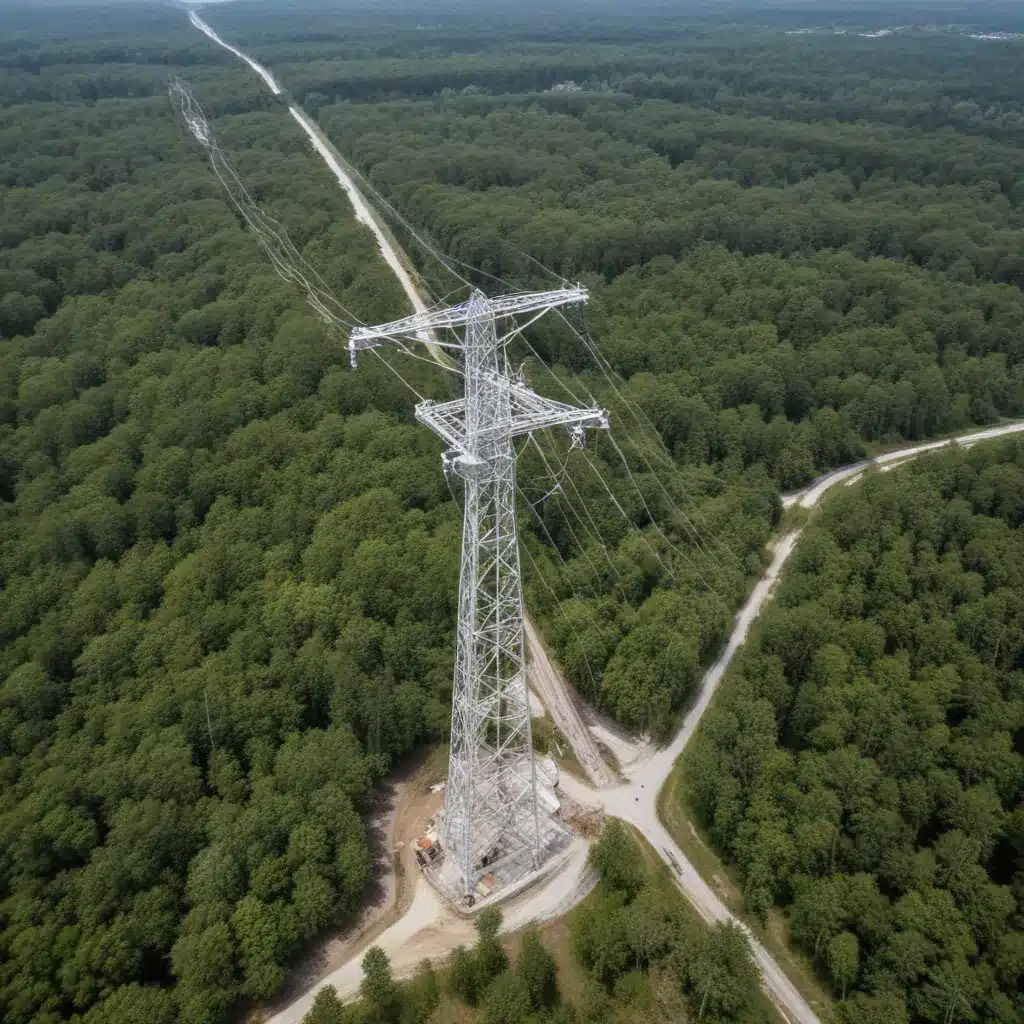
The Fayette Power Project, a coal-fired power plant located in La Grange, Texas, has been a significant presence in the region for decades. As a major contributor to the local energy grid, this facility has inevitably shaped the surrounding environment, including the urban forests that are integral to the region’s ecology and community well-being. Examining the project’s impacts on these vital green spaces provides valuable insights into the complex relationship between energy infrastructure and the natural world.
Urban Forests and Their Ecosystem Services
The urban forests surrounding the Fayette Power Project are diverse and thriving, home to a rich tapestry of tree species, from towering live oaks to delicate understory plants. These forests serve as critical green infrastructure, providing a myriad of ecosystem services that benefit the local community.
The air quality regulating abilities of these urban forests are particularly noteworthy. Trees and other vegetation effectively filter out particulate matter, absorbing and sequestering carbon dioxide and releasing oxygen. This process helps mitigate the impacts of power plant emissions, improving respiratory health and reducing the urban heat island effect.
Similarly, the water resources within these forests play a vital role in the local hydrological cycle. Healthy tree canopies intercept rainfall, reducing stormwater runoff and preventing soil erosion. The intricate network of tree roots also facilitates groundwater recharge, ensuring the availability of clean, abundant water resources.
Furthermore, these urban forests harbor a remarkable biodiversity, providing critical habitat for a variety of flora and fauna. From migrating songbirds to pollinating insects, the diverse array of species supported by these green spaces contributes to the overall ecological resilience of the region.
The Fayette Power Project’s Influence
The Fayette Power Project’s operations have undoubtedly impacted the surrounding urban forests in both direct and indirect ways. Understanding these multifaceted interactions is crucial for developing holistic strategies to mitigate potential negative effects and capitalize on the synergies between energy infrastructure and natural ecosystems.
Power Generation and Emissions
As a coal-fired power plant, the Fayette Power Project generates significant amounts of electricity to meet the region’s energy demands. However, this process also results in the release of various air pollutants, including nitrogen oxides, sulfur dioxide, and particulate matter. These emissions can directly impact the health and vitality of the neighboring urban forests, potentially impairing tree growth, reducing photosynthetic rates, and increasing susceptibility to pests and diseases.
Sustainability Initiatives
In recent years, the Fayette Power Project has made strides towards improving its environmental sustainability. The implementation of flue gas desulfurization systems and selective catalytic reduction technologies has helped to reduce the facility’s emissions, mitigating the direct impacts on the surrounding urban forests. Additionally, the power plant has explored the use of biomass co-firing, integrating renewable fuel sources into its operations to further reduce its carbon footprint.
Socioeconomic Impacts
The presence of the Fayette Power Project has also had significant socioeconomic implications for the local community. On one hand, the facility has provided employment opportunities and economic stability for the region. However, the project’s environmental impacts have also disproportionately affected certain neighborhoods, raising concerns about environmental justice. Ensuring equitable access to the benefits of the urban forests, such as improved air quality and recreational opportunities, is a crucial consideration.
Collaborative Approaches to Sustainability
Addressing the complex interplay between the Fayette Power Project and the surrounding urban forests requires a multifaceted, collaborative approach. TriCounty Tree Care, a local arboriculture and urban forestry specialist, has been actively engaged in this endeavor, working alongside the power plant, community organizations, and government agencies to develop and implement sustainable solutions.
Community Engagement and Stewardship
TriCounty Tree Care has spearheaded efforts to engage the local community in the stewardship of the urban forests. Through educational programs, volunteer initiatives, and partnerships with schools and neighborhood groups, the organization has fostered a deeper understanding and appreciation for the vital role these green spaces play in the region’s environmental and social well-being. By empowering residents to become active stewards of the urban forests, TriCounty Tree Care has helped to amplify the community’s voice in the decision-making processes surrounding the Fayette Power Project.
Ecosystem-Based Management
In collaboration with the power plant and regulatory agencies, TriCounty Tree Care has advocated for an ecosystem-based management approach to address the project’s environmental impacts. This holistic strategy considers the interconnected nature of the urban forests, water resources, and air quality, ensuring that mitigation efforts target the root causes of the challenges rather than just the symptoms. By aligning the Fayette Power Project’s sustainability initiatives with the needs of the surrounding natural systems, TriCounty Tree Care has helped to optimize the balance between energy production and environmental protection.
Innovative Reforestation and Restoration
To further enhance the resilience and ecological value of the urban forests, TriCounty Tree Care has spearheaded innovative reforestation and restoration projects. These initiatives focus on diversifying the tree species composition, improving soil health, and restoring degraded habitats. By strategically planting native, climate-adapted tree species, the organization has helped to create a more resilient urban forest ecosystem, better equipped to withstand the challenges posed by the Fayette Power Project’s operations.
Conclusion
The Fayette Power Project’s impact on the surrounding urban forests is a complex and multifaceted issue, with far-reaching implications for the local community and the broader environment. By recognizing the vital ecosystem services provided by these green spaces and working collaboratively to address the project’s environmental footprint, TriCounty Tree Care and its partners have demonstrated the power of holistic, community-driven solutions.
As the energy landscape continues to evolve, the lessons learned from the Fayette Power Project’s experience can serve as a blueprint for other communities grappling with the intersection of industrial infrastructure and urban forestry. By prioritizing sustainability, environmental justice, and ecosystem-based management, we can unlock the true potential of urban forests to mitigate climate change, enhance community resilience, and foster a more harmonious coexistence between human activity and the natural world.
Visit TriCounty Tree Care to learn more about their innovative approaches to urban forestry and environmental stewardship.


